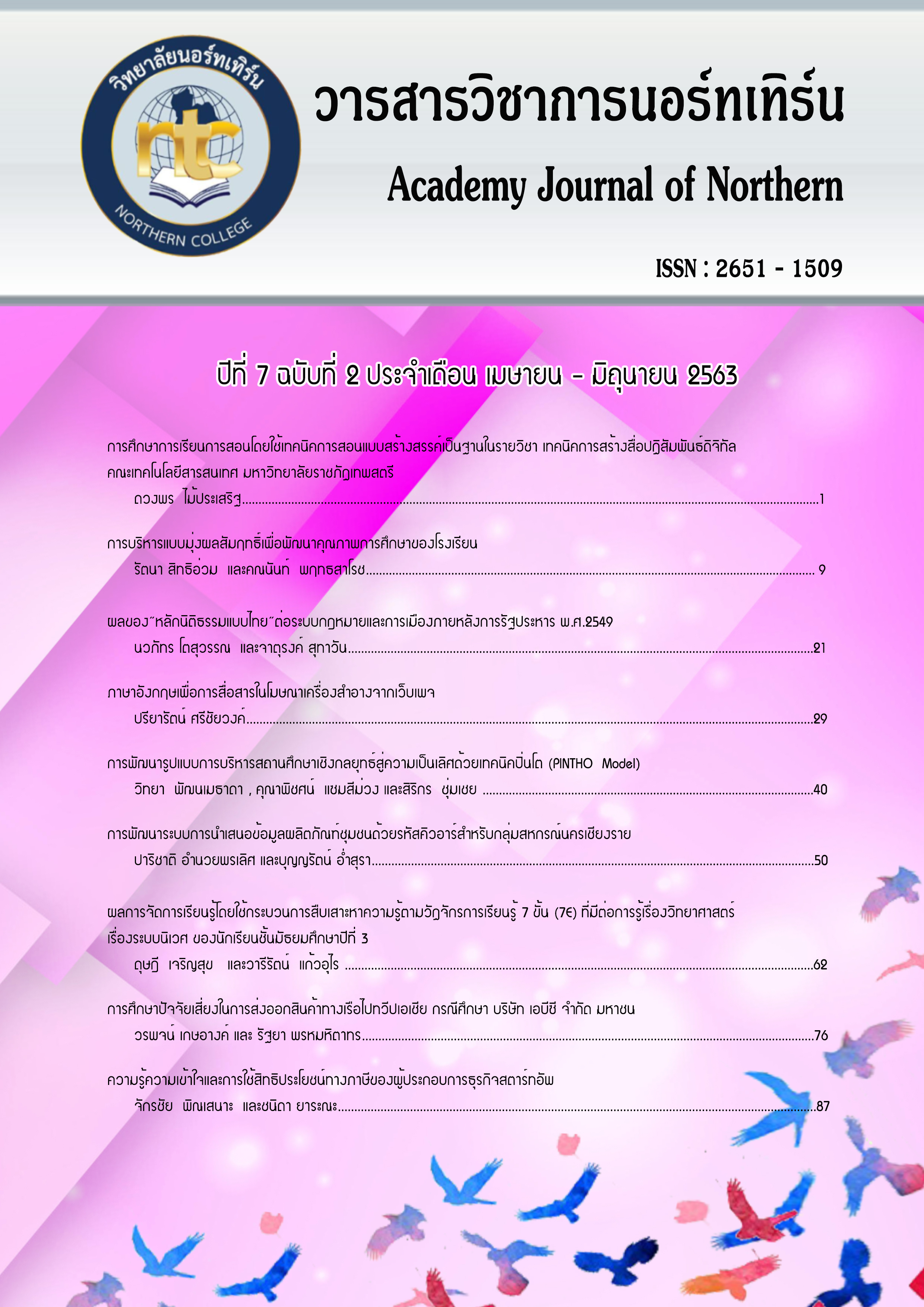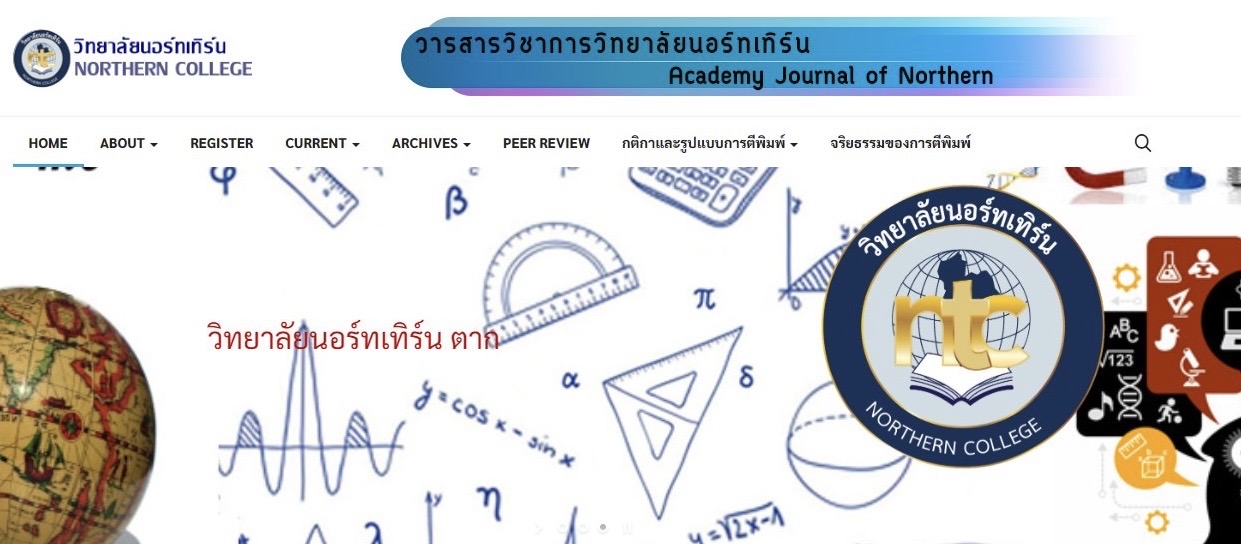English for communication in cosmetic advertisements from web pages
Keywords:
English for communication, cosmetic advertisement, web-page, persuasive language, figurative languageAbstract
This study is focused on English for communication in cosmetic advertising from the web page. The purposes of the research were to study the use of English for advertising communication in English, the persuasive English language in cosmetic advertisements and to study the figurative language in cosmetic advertisements. The data analyzed in this study were 30 products advertisements from 10 cosmetic brands randomly selected from web pages. This study was designed as a mix method (qualitative and quantitative) research. The data were analyzed in the frame of the English for communication in persuasive writing, figurative language and percentage of frequency was used to analyses data.
The results reveal that there are two styles of English for communication features used in the collected data. Most cosmetic advertisements employed the English for communication in persuasive language more than half of the advertisements. The results also show that the data analysis selected use both persuasive language and figurative language form. 83.33% of cosmetic advertisement use persuasive writing and 16.67% are figurative language.
References
วิกีพีเดีย. (2020). การโฆษณา.[ออนไลน์].เข้าถึงได้จาก : https://th.wikipedia.org/wiki/%E0%B8%81%E0%B8%B2%E0%B8%A3%. (วันที่สืบค้นข้อมูล : 15 กุมภาพันธ์ 2563).
Chimombo, M.P.F. and Roseberry, R.K. (1998). The power of discourse : An Introduction to discourse analysis. New Jersey : Lawrence Elbaum.
Emilija A. Sakadolskis. (2003). The use of figurative language in the construction of musical meaning : a case study of three sixth grade general music classes. The Faculty of the Graduate School of the University of Maryland at College Park.
French, J.R.P. and Raven, B.H. (1959). The bases of social power. In : D. Cartwright Ed., Studies in social power. Ann Arbor: University of Michigan Press : 118-149.
Gibbs, R. W. and Jr. (1993) . Process and products in making sense of tropes. In A. Ortony (Ed.), Metaphor and thought (2nd ed.) .(pp. 252-276). Cambridge : Cambridge University Press.
Noam Chomsky. (1968). Language and Mind publ.Harcourt Brace Jovanovich, Inc., 1968. (3rd ed). Cambridge. Cambridge : Cambridge University Press.
Lasswell, H. D. (1948). The structure and function of communication in society. In: L. Bryson Ed., Communication of ideas. New York: Harper.
Littlewood. (1998). Communicative Language Teaching. (18th ed). Cambridge : Cambridge University Press.
Mac Cormac, E.R. (1985). A cognitive theory of metaphor. Cambridge, MA : The MIT Press.
M. J. Manfredo. (1992). Influencing Human Behavior : Theory and Applications in Recreation and Tourism (pp.1– 27). Champaign, IL: Sagamore Publishing.
Poompuang, Kanappati. (2005). English Usage in Perfume Advertising from the Web page. English for Business and Industry, King Mongkut’s Institute of Technology North Bangkok.
Surin, Benjamat. (2005). An Analysis of English Usage in Cosmetic Advertisement Headlines. English for Business and Industry. King Mongkut’s Institute of Technology North Bangkok.
Tangsriwong, Chathalai. (2003). An Analysis of English Sales Talk : A Case study of Communication strategies at Khao Sarn Road, English for Business and Industry. King Mongkut’s Institute of Technology North Bangkok.
Toris, C. C. M., White, P. and Hughes D. (1994) . Figurative language use in physician training groups. Poster presented at the Society of Southeastern Social Psychologists, Wake Forest University, Winston-Salem, NC.
Verbrugge, R. and McCarrel N. (1977). Metaphoric comprehension: Studies in reminding and resembling. Cognitive psychology, 9, 494-533.
Downloads
Published
How to Cite
Issue
Section
License
Copyright (c) 2023 Academy Journal of Northern

This work is licensed under a Creative Commons Attribution-NonCommercial-NoDerivatives 4.0 International License.







